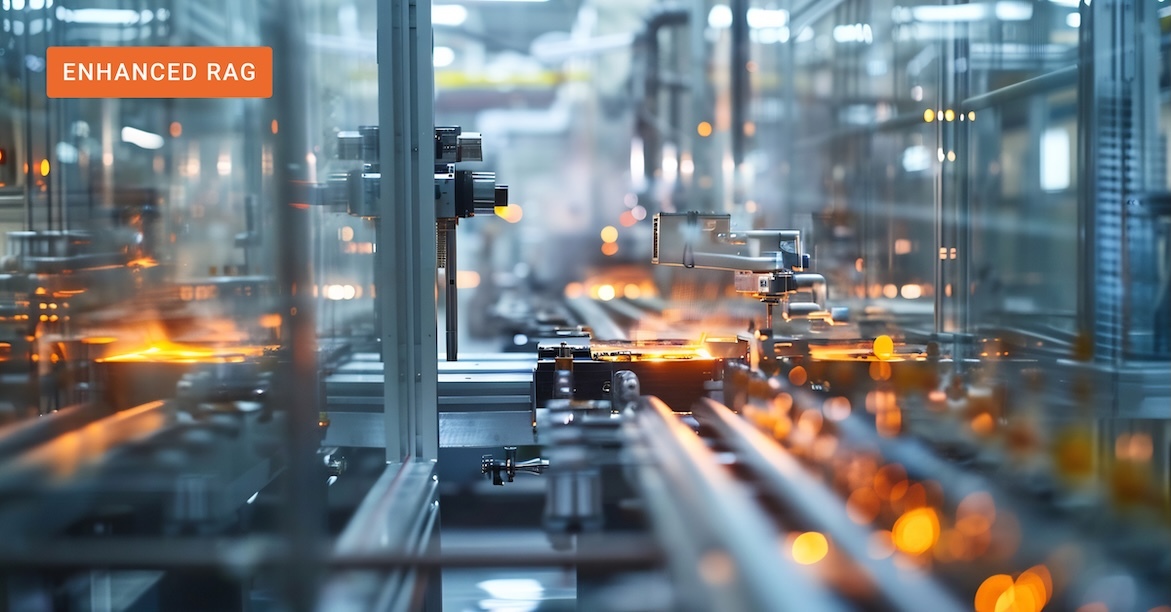Retrieval augmented generation (RAG) has played an outsized role bringing the benefits of generative AI to businesses by helping them tap into their vast enterprise knowledge, stored in documents, wikis, and other knowledge bases. Now, the next frontier involves enabling AI to tap into the live, operational data that drives businesses every day: real-time inventory levels, live customer data, or sensor and control data coming in from the factory floor.
It’s a complex challenge that requires a sophisticated solution. Continuously ingesting dynamic, structured data every time it is updated isn't feasible. Nor is building and maintaining separate data pipelines for each system. Both approaches are complex, costly, and add latency, forcing your AI to work with stale data. Worse yet, duplicating sensitive operational data multiplies enterprise AI security risks and makes effective data governance nearly impossible.
Data virtualization provides a solution, integrating seamlessly into existing RAG architectures, enhancing them to provide on-the-fly access to real-time operational data. Rather than continuously ingesting data, data virtualization lets your enterprise GenAI platform access data points right where they reside, without disruption. This article explains how data virtualization expands the reach of your enterprise AI, allowing it to generate the most comprehensive, accurate, and timely insights possible from your enterprise data.
The Missing Data in Standard RAG Pipelines
Most RAG-based generative AI platforms relied on today follow a straightforward process: First, they export or crawl content from various databases, applications, and document repositories. The data is then processed and indexed for hybrid search, which combines keyword and vector search. When a user asks a question, the system retrieves the most relevant information from this search index and feeds it to a large language model (LLM) to generate an answer.
While this works for many common applications, it creates significant challenges for more sophisticated enterprise AI use cases that require secure, real-time access to operational data. Reasons include:
- Stale Data: In the case of real-time datasets, information may be outdated the moment it gets copied. Decisions made from a RAG system using week-old, day-old, or even hour-old data can be incorrect and costly.
- High Maintenance Overhead: Standard RAG requires building and maintaining complex ETL pipelines simply to keep the vector database refreshed. This is expensive, brittle, and consumes valuable engineering resources.
- Compliance Risks: Duplicating sensitive data from secure systems of record into a new data store increases your company's security footprint and complicates compliance monitoring and governance.
- Incomplete Coverage: It is often impractical or impossible to ingest all the relevant data from across an enterprise. This leaves the RAG system with an incomplete knowledge base, leading to partial or inaccurate answers.
What is Data Virtualization?
Instead of copying data, a more effective approach is to enhance the RAG pipeline to query data sources directly and in real time. This is achieved using data virtualization, a technology that provides a unified query interface for all your enterprise data without moving it.
What is data virtualization? Data virtualization creates a unified view of data from multiple sources without moving or copying it. It acts as a data abstraction layer, allowing the enterprise GenAI platform to query diverse datasets in real time through a single, secure interface, providing a unified view of data, regardless of where it is stored.
The data virtualization layer sits between your RAG application and your operational data sources. It uses several core components:
- Unified Data Access Layer: The unified data access layer provides direct access to databases, data warehouses, data lakes, and business applications like your CRM or ERP.
- API Endpoints: The system allows the creation of API endpoints that reroute queries to the appropriate underlying data sources. These endpoints can answer queries by aggregating and transforming data on the fly.
- Query Engine: This powerful engine receives a query from the RAG system and reroutes it to the appropriate underlying data sources. It can aggregate, join, and transform data from multiple locations on the fly.
- Access Control Layer: Data virtualization centralizes data governance by connecting to SSO. It enforces all existing security rules, role based permissions, and access controls at the source, ensuring the GenAI platform can only access the data it is authorized to see.
- Lineage Tracing: To ensure auditability, the data virtualization layer should let users track all GenAI responses back to the data they are based on.
From Real-Time Data to Real-Time Action
Equipped with a live connection to the pulse of your business, AI applications can directly query operational databases, tap into SaaS applications, and pull from APIs to access up-to-the-minute information. Moreover, this live data access lets organizations take their AI value generation to the next level, from passive analysis to active execution, enabling it to directly update records, trigger complex workflows, and execute transactions across multiple platforms. The expans the AI's remit from transforming simple conversational requests to automating business tasks, effectively closing the loop between insight and action.
Unlocking Powerful Business Outcomes with Data Virtualization and RAG
By connecting your RAG pipeline to a virtualized data layer, you avoid having to constantly ingest rapidly changing data to deliver real-time freshness, driving real business value in sectors including banking and financial services (BFS) and manufacturing. Consider these powerful examples:
- Real-Time Risk Monitoring: A financial services firm can build a GenAI assistant that pulls up-to-the-minute market, liquidity, and counterparty data directly from various risk systems. An analyst can simply ask, "What is our current exposure to ACME Corp across all trading desks?" and receive an answer based on live data.
- Instant Compliance Checks: A marketing team at an insurance company can validate new promotional content against the current state of regulations. The RAG system can query a virtualized layer that unifies internal policy documents and external regulatory feeds to ensure all claims are compliant.
- Smarter Operational Troubleshooting: A plant engineer in a manufacturing facility can use a conversational copilot to diagnose equipment failures. The RAG system can query live IoT sensor data and maintenance logs in real time to suggest probable causes and solutions, minimizing downtime.
The "ingest-first" model of RAG has already demonstrated its value in the enterprise setting, but it runs into limits when it comes to integrating real-time data into RAG workflows. Data virtualization solves the core enterprise challenges of data silos, latency, and governance, letting you build truly powerful GenAI applications that your business can rely on.
Take the Next Step: Apply GenAI to Your Industry
The architectural approach described above – connecting generative AI to live, enterprise-wide data – unlocks previously untapped value. To explore how data virtualization and other enhancements to standard RAG can be leveraged in practice, we have developed detailed technical guides for key industries.
- For Leaders in Manufacturing: Discover how to unify fragmented data, accelerate R&D, and build more resilient supply chains. Our guide, "Transforming Manufacturing with Enterprise GenAI," lays out a technical framework for creating a smarter, more productive, and more profitable future.
- For Leaders in Banking & Financial Services: Learn the strategies for deploying trusted GenAI while ensuring strict security and compliance. "Transform Banking & Financial Services with Enterprise GenAI" details practical use cases for breaking down data silos and driving operational excellence in the BFSI sector.
And don't forget to subscribe to our newsletter to keep up to date on best practices, white papers, use cases, and industry news!







